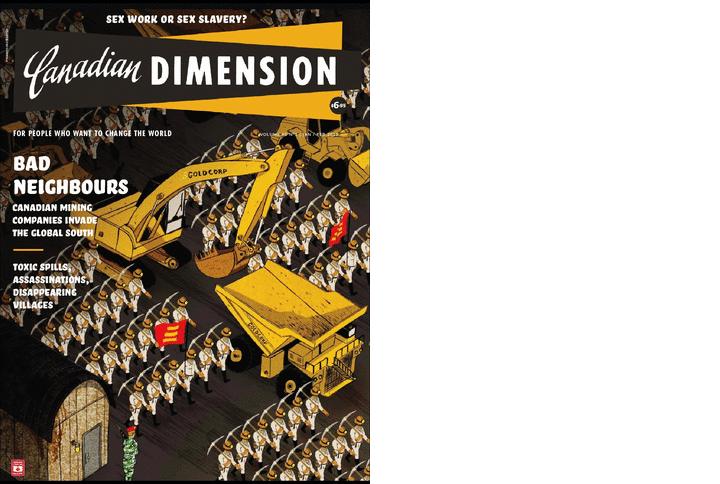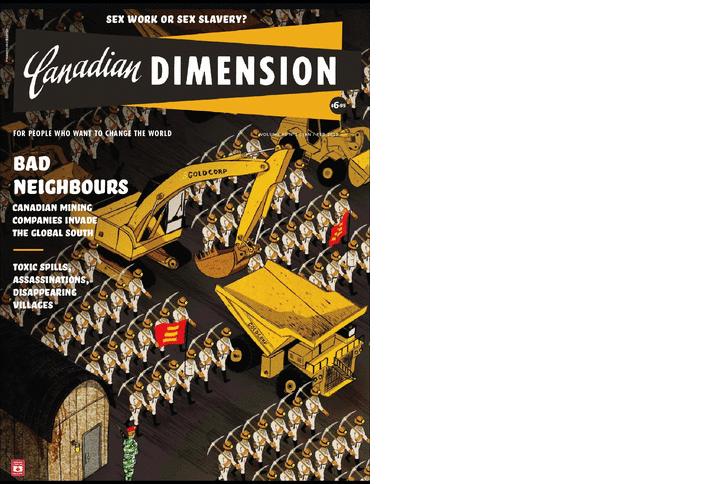Canadian Dimension is a Canadian leftist magazine founded in 1963 by Cy Gonick and published out of Winnipeg, Manitoba six times a year.
Last Year Alone, at least five opponents of Canadian mining projects were assassinated in Latin America: three in El Salvador, one in Guatemala, and one in Mexico. Critics of mining operations there and elsewhere were wounded and maimed in attacks while many, along with their family members, were threatened. Canadian mining corporations were not necessarily directly responsible for the deaths and acts of intimidation and violence, but some of them were carried out by company security personnel and current or former employees.
So it may be the case that the implicated companies are not legally liable, but alongside the local elites and states that license and promote extractive activities, they at the least bear a moral responsibility for creating the situations of conflict in which assassinations and other acts of violence take place.
Most Canadians are not used to thinking of their investors as human rights violators or of Canada as a “bad neighbor.” Sadly, since the early 1990s and especially over the past decade, the activities of our miners are earning us that reputation. The corporations themselves, of course, argue that they are bringing much needed employment and even “sustainable development” to the poor regions where they operate. If they are doing this, it appears to be a form of development that many do not wish to see in their communities.
Canadian mining corporations abroad
A spectacular expansion of Canadian mining investment in Latin America has taken place over the last two decades, part of the general growth of our mining investment abroad. Today, almost 60 percent of all mining companies are listed on the Toronto Stock Exchange. Our miners are prominently visible all over the southern hemisphere, and their operations have provoked demonstrations in front of Canadian embassy buildings in various Latin American capitals.


























